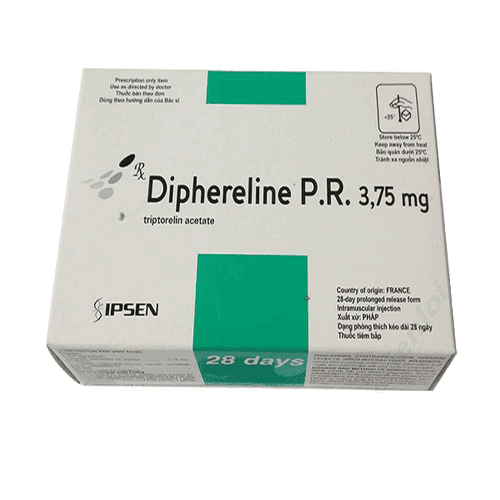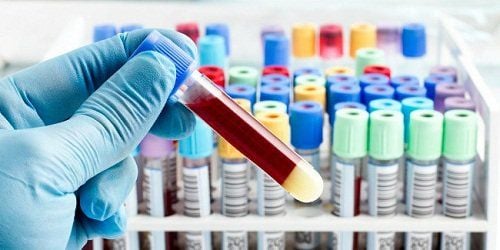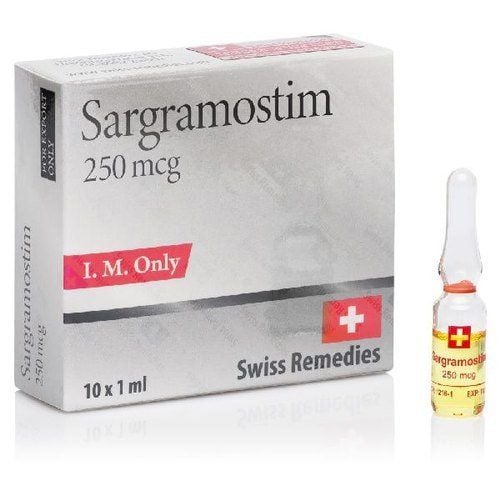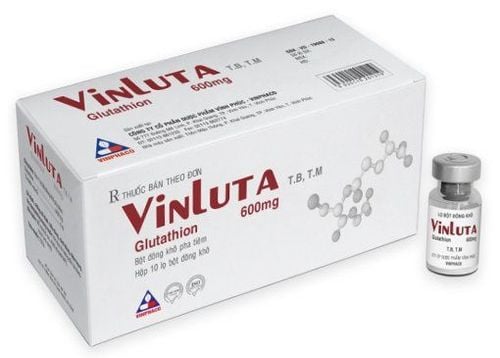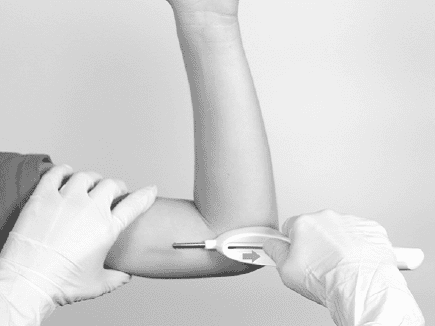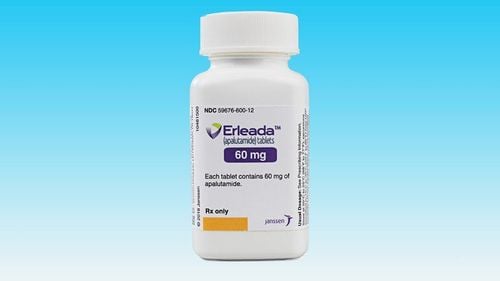This is an automatically translated article.
Cancer stage is a way of describing the location of the malignancy, if it has metastasized and whether it has affected other organs. Proper staging of prostate cancer is important because it is used to plan treatment and predict a patient's prognosis.
1. Prostate Cancer Diagnosis
Mostly, prostate cancer is detected through routine physical examination. Health organizations recommend routine prostate cancer screening in men over 50 years of age or earlier for those with risk factors for prostate cancer.
Prostate cancer screening tests may include:
A rectal exam (DRE). During a DRE, the doctor inserts a lubricated, gloved finger into the rectum to examine the prostate next to the rectum. If your doctor finds any abnormalities in the shape, texture, or size of the gland, further testing may be needed. Prostate-specific antigen (PSA) test. A blood sample is taken from a vein in the arm and analyzed for PSA. Small amounts of blood PSA are normal. However, if higher than normal levels are found, it could be a sign of a prostate infection, inflammation, enlargement or cancer. The PSA test in combination with the DRE helps identify prostate cancer in its earliest stages, but studies have not shown that these tests are particularly helpful. For that reason, there is much debate surrounding prostate cancer screening. If abnormalities are found on the DRE or PSA test, your doctor may order a test to confirm prostate cancer, such as:
Ultrasound : If other tests raise an increase in prostate cancer. If prostate cancer is suspected, your doctor may use ultrasound to further evaluate the prostate gland. This probe uses sound waves to create images of the prostate gland.
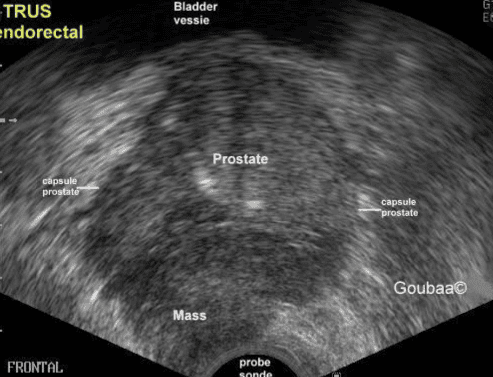
Hình ảnh siêu âm ung thư tiền liệt tuyến
Collect a sample of prostate tissue: If the initial test results show prostate cancer, your doctor may recommend that you take a sample of suspected cells from the prostate (biopsy). A prostate biopsy is usually done using a fine needle inserted into the prostate gland to collect tissue. Tissue samples are analyzed in a laboratory to determine if cancer cells are present. When a biopsy confirms the presence of cancer, the next step is called staging, which determines the nature of the cancer. Tissue samples were studied for prostate cancer cells compared with healthy cells. The more cancer cells differ from healthy cells, the faster the cancer will progress and more likely to spread quickly.
The Gleason score is most commonly used in the assessment of prostate cancer cells. The spectrum of scores can range from 2 (non-cancerous) to 10. The lowest score for cancer is 6, which is called slow-progressing cancer. A Gleason score of 7 is moderately advanced cancer and a score of 8, 9, or 10 is a rapidly progressing cancer.
In general, the higher the Gleason score, the more the cancer develops. This means that the disease is more likely to grow and spread to other parts of the body. Now, doctors use this information, along with the stage of the cancer, to choose the best treatment for a patient. If detected early, prostate cancer is a disease with a very good prognosis.
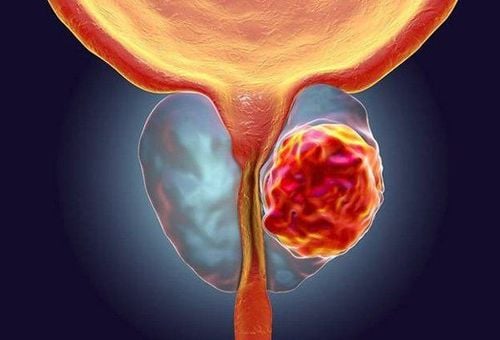
Điểm số Gleason cho phép đánh giá mức độ nguy hiểm của ung thư tiền liệt tuyến
2. Characteristics of 4 stages of prostate cancer
After making a cancer diagnosis, the doctor will determine the stage of prostate cancer in order to provide the right treatment for the patient.
Here are the 4 stages of prostate cancer:
Stage I : Cancer in this early stage is usually slow growing. The tumor was not palpable and involved one half of the prostate or even less. Low PSA level in the blood. Cancer cells are well differentiated, which means they look like healthy cells.
Treatment for this stage prostate cancer can be surgery combined with radiation therapy.
Stage II : The tumor is found only in the prostate gland. PSA levels are moderate or low. Stage II prostate cancer is small, but may carry an increased risk of growing and spreading.
Stage IIA: The tumor cannot be palpable and involves one half of the prostate or even less. PSA levels were moderate and the cancer cells were well differentiated. This stage also includes larger tumors confined to the prostate as long as the cancer cells remain well differentiated. Stage IIB: The tumor is found only inside the prostate and it may be large enough to be palpable during a DRE. PSA levels are average. Cancer cells are moderately differentiated. Stage IIC: The tumor is found only inside the prostate and it may be large enough to be palpable during a DRE. PSA levels are average. Cancer cells may be moderately or poorly differentiated.
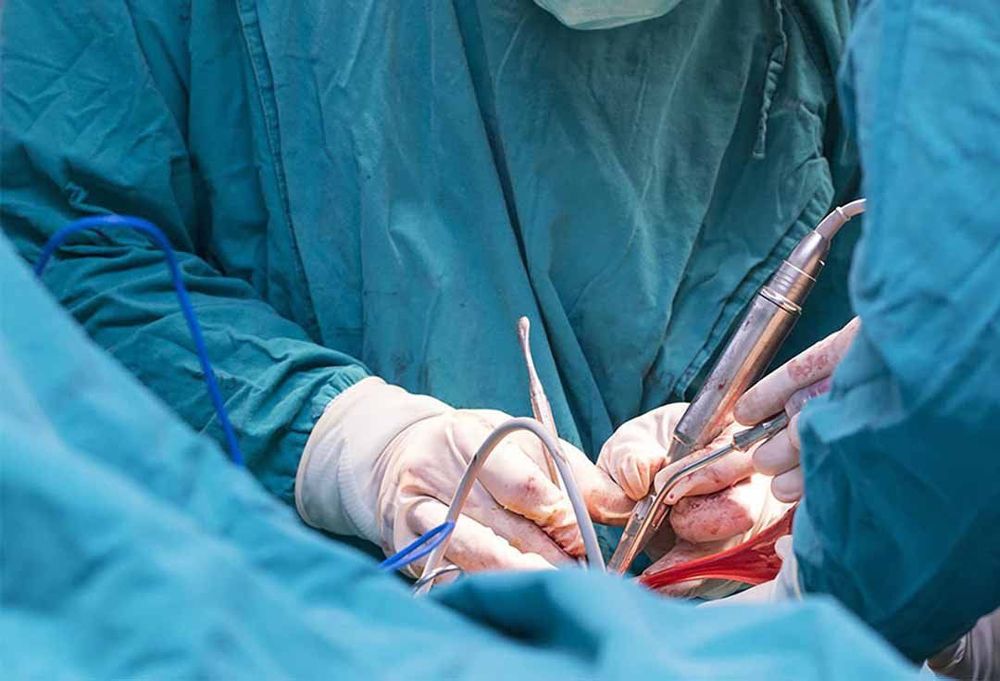
Bệnh nhân ung thư tuyến tiền liệt ở giai đoạn này có thể được chỉ định phẫu thuật
At this stage, the tumor size is still very small and rectal examination is detectable. The PSA level in the blood is below 20g/ml.
This treatment for prostate cancer can combine surgery to remove part of the prostate and combine it with radiation therapy. Depending on the patient, the doctor will specify the individual radiation treatment time. Usually, radiation therapy lasts about 6 weeks at most.
Stage III : High PSA level, tumor is growing or cancer is high. All of these suggest a locally advanced cancer that has the potential to grow and spread.
Stage IIIA: Cancer has spread beyond the outer layer of the prostate into nearby tissues. It may also have spread to the seminal vesicles. High PSA level. Stage IIIB: The tumor has grown outside the prostate and may have invaded nearby structures, such as the bladder or rectum. Stage IIIC: The cancer cells on the tumor are poorly differentiated, which means they look very different from healthy cells. Patients with this stage of prostate cancer are often prescribed chemotherapy combined with endocrine therapy or surgery to remove the tumor.
Stage IV : Cancer has spread beyond the prostate gland.
Stage IVA: Cancer has spread to regional lymph nodes. Stage IVB: The cancer has spread to distant lymph nodes, other parts of the body, or to the bones. PSA levels in the blood at this stage vary indeterminately.
Treatment methods for prostate cancer patients at this stage are aimed at prolonging life and creating psychological comfort, limiting the side effects of chemotherapy and pain caused by metastatic tumors. out.
Recurrence: Recurrent prostate cancer is cancer that has come back after treatment. It can return to the prostate area again or in other parts of the body. If the cancer comes back, another round of testing will be done to find out how much it has come back. These tests are often similar to those performed at the time of initial diagnosis.
It is important for the patient to be properly staged, because this plays a huge role in choosing the best treatment, as well as assessing the patient's prognosis. For this reason, many tests should be performed to determine the exact stage of prostate cancer.

Ung thư tuyến tiền liệt hoàn toàn có thể tái phát sau khi đã điều trị
3. Prostate Cancer Prevention
You can reduce your risk of prostate cancer with the following measures:
Eat a healthy diet full of fruits and vegetables. Avoid high-fat foods and instead focus on choosing a variety of fruits, vegetables, and whole grains. Fruits and vegetables contain many vitamins and nutrients that can contribute to health. One of the nutrients consistently linked with prostate cancer prevention is lycopene, which can be found in raw or cooked tomatoes. Although it is possible to prevent prostate cancer through diet, it is not the only factor in preventing the disease. A healthy diet with a variety of fruits and vegetables can improve overall health. Exercise: Exercise improves overall health, helps maintain weight, and improves mood. There is some evidence that men who exercise most days have a lower rate of prostate cancer than men who exercise little or no. Try doing it most days of the week. If you're new to exercise, start slow. Maintain a healthy weight. If your current weight is reasonable, train to maintain this by exercising most days of the week. If you need to lose weight, exercise more and reduce the number of calories you eat each day. Ask your doctor to help create a plan for healthy weight loss.

Bạn cần duy trì một chế độ tập luyện đều đặn nhằm ngăn ngừa ung thư tiền liệt tuyến
Consult your doctor if you have risk factors for prostate cancer. Men at high risk for prostate cancer may consider other medications or treatments to reduce their risk. Prostate Cancer Prevention Research suggests that the drug finasteride (Propecia, Proscar) may prevent or delay the onset of prostate cancer in men 55 years of age and older. This medication is currently used to treat prostate enlargement and hair loss in men. However, the use of finasteride also contributes to an increase in unwanted effects and an increased risk of developing more advanced prostate cancer. At this time, finasteride is not recommended to prevent prostate cancer.
Early cancer screening is considered a perfect measure in the timely detection and treatment of all types of cancer. Reduce the cost of treatment and especially reduce the mortality rate in patients. Vinmec International General Hospital always deploys and introduces to customers a HIGH-TECH CANCER CHECKLIST PACKAGE to help with gene testing, imaging, and biomarkers for early tumor detection. Vinmec International General Hospital has many early cancer screening packages. Only one gene test can assess the risk of 16 common cancers in both men and women (lung cancer, colon cancer). rectal cancer , breast cancer , pancreatic cancer , cervical cancer , stomach cancer , prostate cancer ,....)
Early detection of early signs of cancer through diagnosis imaging, endoscopy and ultrasound. The operation is simple, careful and accurate. A team of well-trained specialists, especially in oncology, are capable of handling cancer cases. With facilities, advanced and modern medical equipment and a team of doctors with deep expertise and experience. At Vinmec, the examination process becomes fast with accurate results, saving costs and time for patients.
Please dial HOTLINE for more information or register for an appointment HERE. Download MyVinmec app to make appointments faster and to manage your bookings easily.
References: iconcancercentre.sg, hopkinsmedicine.org, cancer.net




